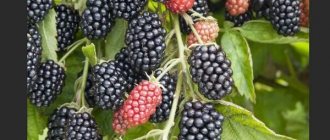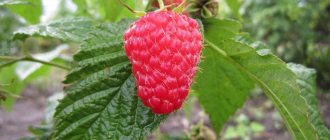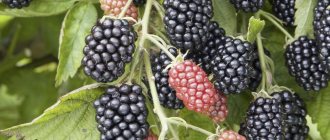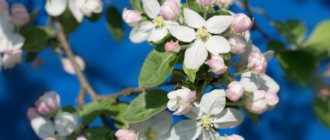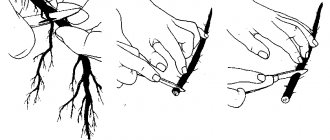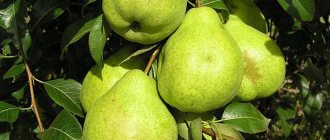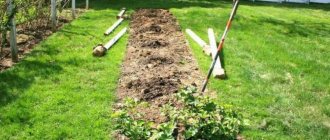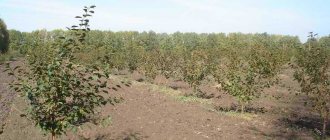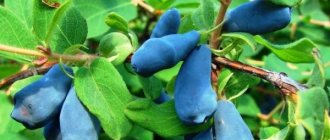Blackberries are a common berry bush. Thornless varieties are especially popular. They recently began to appear in ordinary areas. Upright, climbing, climbing varieties will decorate any garden and become a source of useful vitamins. These include thornfree blackberries. Its branches are completely free of thorns, making it difficult to collect fruits.
This blackberry variety is distinguished by its high yield, amazing taste of berries, and ease of care. It can be grown in different climatic conditions. The shrub is unpretentious to weather changes. Its universal qualities have made Thornfree a favorite among amateur gardeners and commercial gardeners.
Historical reference
American breeder D. Scott developed the variety in 1966. Material was taken from plants such as Bryned, Merton Thornles and El Dorado. The hybrid is classified as a Maryland variety. It was the first to be brought to Russia. Already in 2006, Thornfree was included in the State Register. It was recommended for planting in all regions, which indicates excellent characteristics.
Currently, Thornfree is often used in breeding research. It has good frost resistance and consistently produces large yields. The variety formed the basis of such hybrids as Black Satin, of American origin, and Chačanska Bestrna, of Serbian origin.
Diseases and pests
With proper care and compliance with all planting rules, Thornfree blackberries are reliably protected from diseases and insect pests.
IMPORTANT! If “Thornfree” and any varieties of raspberries are present on the site together, it is better to place them at a decent distance from each other (at least one hundred meters). So, almost all raspberry varieties carry diseases that can harm Thornfree blackberries.
Blackberry "Thornfree" is immune to most diseases of plants of this family, but if infection does occur, it is better to remove the infected parts of the plant and not resort to spraying with chemicals.
Description
The popularity of the variety is caused not only by its excellent characteristics, but also by the possibility of industrial cultivation. Thornfree blackberry adapts well to harsh Russian conditions. The fruits have excellent taste and delicate aroma.
The plant is represented by a large semi-creeping bush. It has massive hard shoots with a diameter of 3 centimeters. This can be harmful during winter insulation, since it is difficult to tilt the branches towards the ground. The branches grow up to 6 meters. To control the bush, it must be properly pruned and placed on a trellis. At the same time, it does not have root shoots, which excludes the possibility of this method of breeding.
The variety belongs to the category of late ripening. The fruits begin to appear in the second year after planting. The shoots are covered with large green leaves. The branches on which the fruits are formed are strongly drooping. In June, pink inflorescences appear on them. Up to 30 berries can be formed in one brush. This ensures consistently high yields.
The berries of the hybrid are quite large. They are black, glossy and oval. According to expert assessment, the berries received 4 points when fresh. When the variety first appeared, it was given the maximum score. After processing, according to expert assessment, 3 points are given. The berries are dense, but when fully ripe they become softer, more aromatic, sweeter and lose their shape. It is recommended to collect them when they reach technical maturity. During this period, the fruits become sour and do not have a pronounced aroma.
A special feature of the Thornfree fruit is its large drupe.
Pros and cons of the variety
Pros:
- high productivity;
- unpretentiousness, ease of care;
- disease resistance.
Minuses:
- poor winter hardiness;
- difficulty in determining the moment of ripeness.
The last statement needs decoding. The fact is that an unripe Thornfree blackberry does not differ in appearance from a ripe or overripe one. At the same time, an unripe berry has a sour taste, while an overripe one tastes bland. It is difficult for a novice gardener to catch the moment when a berry is at the right stage of ripeness.
Characteristics of the variety
The description of the Thornfree blackberry variety makes it clear that it is quite productive, but the characteristics cannot be called unambiguous. When there were no other hybrids, it was believed that this was the best. Currently, it can be seen both in private plots and on farms. But for new plantings, Thornfree is not always preferred.
It must be borne in mind that Thornfree does not have very high winter hardiness. It can tolerate frosts up to 17 degrees. In any region, bushes require shelter, otherwise the main shoots will freeze.
The variety can tolerate hot climates, but it is recommended to water the bushes as needed. Compared to other hybrids, Thornfree's drought tolerance is average.
You can use any soil for planting except sandstone. Blackberries of this variety are unpretentious to the composition of the soil. Caring for Thornfree is easy when you follow all the rules for pruning and watering. The most difficult thing will be to tear up the bushes for the winter. Thick branches bend poorly and do not lie to the ground.
The berries are collected during the period of technical ripeness. If they overripe, they lose their shape and begin to blur.
The yield of Thornfree from one bush reaches 20 kilograms, if you follow the rules of pruning and watering, and also give the plants enough sunlight
The variety begins to bloom only in the second half of June. Pink flowers appear on the shoots. The bushes begin to bear fruit in the south in mid-August, and in the north by September. Late ripening is a problem for gardeners in Siberia and the Moscow region.
The bush bears fruit well. With industrial cultivation, you can collect up to 80 centners of berries per hectare. Currently, varieties with improved characteristics have appeared. Black Satin pleases with abundant harvests, but the taste of the berries is significantly inferior to Thornfree.
In small areas
Since the Thornfree blackberry variety is self-pollinating, it is quite suitable for growing in greenhouse conditions. Moreover, this variety has a tendency to be remontant, so when the required temperature conditions are provided, the replacement shoots begin to produce berries.
Learn how to grow blackberries from seeds at home.
Containers can be used for growing in a greenhouse. They must be installed in a certain order. 2 plants are placed per 1 m². When planting seedlings in the soil in a greenhouse, it is recommended to maintain a row distance of 0.5 m, and a row spacing of at least 1.5 m. In principle, the planting process is the same as in open ground. The main thing is to provide the necessary temperature conditions for the berries to ripen.
Video: how to grow blackberries in a greenhouse
Growing Thornfree blackberries on the balcony to harvest a large harvest will not work. This voluminous plant with long shoots will be difficult to place in such a small area. But if the seedlings that took root in the spring are not planted in open ground, but left until autumn or kept until next spring, this will be a great idea. In this case, they will be stronger and more accepting.
The process of growing them on the balcony is as follows:
- First, the seedlings are planted in 1 liter containers.
- In May they are transplanted into 5 liter containers. A drainage layer of vermiculite is placed at the bottom.
- After 14 days, the containers are exposed to the sun after planting.
To protect the roots from the sun, sprinkle them with perlite.
Care is usual, as when growing in open ground. In winter, during frosts, pots are kept on the balcony only if it is heated and well insulated. Otherwise, it is recommended to bury them in a greenhouse and cover them. In spring, seedlings are planted in a permanent place.
Did you know? The Black Cascade blackberry variety was bred for growing on the balcony. The length of the vines of this hanging variety is only 0.5 m. This plant crop is placed in a pot and can delight you with berries throughout the year.
Disadvantages of the variety
The characteristics of the variety give an idea of its advantages. But, like other species, Thornfree also has its disadvantages:
- it cannot tolerate severe frosts;
- tough shoots are difficult to tie up and cover;
- the taste of the fruit has a noticeable sourness;
- due to late ripening, most of the harvest is lost;
- fully ripened fruits cannot be transported;
- If harvested untimely, the fruits are lost due to gray rot.
To get the long-awaited harvest, you need to take good care of the plants. Timely watering, pruning and warmth will allow you to collect the maximum number of berries.
Formation of a plant bush
Pruning Thornfree blackberries is an important procedure that affects crop development and yield. Gardeners and gardeners often have different opinions about the formation of bushes. Some believe that the greatest harvest can be obtained only with strict regulation of the length of the branches. Others are of the opinion that increasing productivity can only be achieved by increasing the volume of bushes. But in any case, it is necessary to take into account the size of the plot on which the blackberries are planted and the number of plants planted. The personal preferences of the owner of a summer house or garden also play a significant role.
Methods for pruning blackberries:
- To form a fan bush, fruiting shoots are woven, stacked one on top of the other. In this case, young branches should grow freely, but they should be directed in the right direction.
- If short pruning is applied to Thornfree, then when the required length is reached, the shoots are cut with pruning shears, which will stimulate the growth of side branches, which are later subjected to the same pruning.
Experienced summer residents recommend, in any case, cutting off the branches that bore berries this year. In practice, it has been proven that this procedure has a positive effect on the berry harvest.
Subtleties of landing
Proper planting and care are the key to success in growing plants. Blackberries can grow anywhere, but prefer bright, warm areas. Seedlings should be planted at a distance of 1.5-2 meters from each other, as the bushes grow very large and massive.
The site is prepared in the fall, and planting occurs in the spring. The holes must be dug 2 weeks before transferring the seedlings. The hole should be 0.5*0.5 in size. In order for the plant to take root well, the hole is filled with humus, humus and ash. The roots are covered with garden soil on top.
In the northern regions, it is recommended to plant blackberries in the spring. Before the first frost, young plants have time to take root and grow stronger. In the south, blackberries are planted only in the fall, since hot summers can destroy tender seedlings. In other regions, it is preferable to start planting in the spring.
Since the root system of the plant reaches 1.5-2 meters in depth, it is necessary to find an area for planting where groundwater cannot harm it
Planting seedlings and care in autumn
Blackberry Chester Thornless
The planting method, site selection, cultivation and care of these shrubs are almost the same as for raspberries. Blackberry tophfree is unpretentious in terms of soil, although it does not develop well on sandstones. If planting is carried out on too acidic soil, preliminary liming will be required.
The best choice would be fertile loams in open sunny areas in cool regions and with light shade in southern regions. The last condition is mandatory, since the berries bake under the hot sun.
Site preparation
Blackberries grown in a container can be planted throughout the season. Sprouts with an open root system take root better in the spring. If you are starting a plantation, you should choose the trench method. The width and depth of the ditch are the same, about half a meter.
Cultivation of the site is carried out in advance, in the fall. A 10 cm layer of compost or rotted manure is placed at the bottom of the dug trench. Fill the ditch with earth mixed with complex fertilizers. The soil will settle over the winter, and in the spring the trench will be ready to receive seedlings.
Landing
When planting bushes, you should take into account that the shoots of thornfree blackberries are powerful and long. Therefore, a distance of about 3-4.5 m is maintained between plants. The seedlings are placed in the center of the trench, not forgetting to straighten the roots, and sprinkled with earth so as to slightly cover the root collar.
Plantation planting
It is necessary to compact the soil around the bush manually so as not to damage the rhizomes located close to the surface. Then the shoots are pruned to 25 cm, and the ground around is mulched with sawdust, peat or compost. After a few days, the planting is watered abundantly.
Features of care
Growing Thornfree is directly related to proper garter. Large, hard shoots begin to spread as soon as they grow beyond 2 meters. The branches first point upward and then bend. Under the weight of the berries they reach the ground. Below, the berries ripen poorly due to lack of light and rot. A trellis is required for gartering. It is made from several posts and wire. Experts recommend directing young shoots in one direction, and fruit-bearing shoots in the other. Some gardeners do not fix the first year's shoots on the trellis at all.
Mandatory care measures that allow you to get a large harvest:
Why do blackberries and berries dry out?
- Despite their drought resistance, it is recommended to water the bushes weekly if the weather is very hot.
- Loosening the soil by 10 centimeters in the tree trunk circle is carried out after tying and before winter. This area is mulched throughout the summer to retain moisture.
- In order for the bushes to bear fruit well, they need to be fed. Blackberries love organic matter, so humus, compost and ash will never be superfluous. In spring, the plant needs nitrogen. For the flowering period, you will need a mixture of minerals that does not contain chlorine. Organic matter is preferable during fruit formation and ripening. After removing them, phosphorus-potassium mixtures must be added.
Watering a young plant is required quite often until it takes root. Up to 5 liters of water should be poured onto each root. To prevent moisture from evaporating, the tree trunk circle is mulched. For this purpose, agrofibre, sawdust, straw, and crushed bark are used.
Correctly and timely fertilizing increases the yield. Every 14 days, foliar treatment with a chelate complex is recommended.
Highly branched bushes require high-quality and timely pruning
Old shoots from which the harvest has already been harvested must be eliminated. They will no longer bear fruit and will take away nutrients from the bush. In spring, frozen and damaged branches are removed. Of the surviving ones, you should leave from 6 to 10 of the strongest.
There are several pruning methods:
- pinching young shoots that have reached 30 centimeters will allow you to obtain more flexible side branches;
- when the lash grows to the required length, it is cut off, and the lateral shoots are left up to 40 centimeters long;
- Only very long sections are eliminated.
Each method has its advantages, and all of them are aimed at increasing the yield. Spring pruning allows you to properly form the bush and allow strong shoots to bear fruit.
You cannot cut out branches that formed last season; it is on them that the berries will form.
In the fall, you must definitely take care of a comfortable winter. The blackberries are removed from the trellis and placed on the ground. Unnecessary shoots have already been cut off, and the remaining branches are collected in a bundle. Pruning using the first method makes it easier to deal with elastic lashes. You can cover the bushes with straw, sawdust or spruce branches. It is not recommended to use film; it is better to replace it with agrofibre. Under polyethylene, the plant perishes, which leads to its death.
Proper care is the key to a good harvest
With good watering, fertilizing and pruning, the yield of Thornfree blackberries increases.
Growing this berry bush is not an easy task for new gardeners. The yield of the berry depends on proper care of thornless blackberries.
Features of watering
Without intensive care, the Thornfree blackberry bears fruit regularly, but the berries become smaller. With proper watering, the fruit bush will bring you large and juicy berries.
During the fruiting period, blackberries need abundant watering. It is best to water the plant once a week. For each bush you need to prepare about 20 liters of water.
Important! Excess moisture leads to root rot.
Blackberry feeding
Fertilizing is one of the important steps to achieving a bountiful harvest and increasing the size of the berries. Immediately after planting, you need to devote a lot of time to blackberries in the first three years.
Timely fertilization with nitrogen fertilizers will bear fruit during the harvest period. To do this, take 15 g of urea or 20 g of ammonium nitrate for one bush.
Blackberries are fertilized annually in the spring. 55 g of ammonium nitrate is applied to a fruiting blackberry bush.
After loosening, mulching materials are scattered on the ground. The layer should be 5 cm.
In autumn, 95 g of superphosphate and 25 g of potassium sulfate are added on top of the mulch. Also, after digging up the soil with a garden fork, 7 kg of humus is added to a depth of 10 cm.
Important! Mineral fertilizer is applied exclusively after watering the bush.
Garter bushes
Pipes or reinforced concrete pillars with a cross-section of 10 cm and a height of approximately 2.5 m can be used as support . They are dug into the ground at a short distance from each other. The wire is pulled at a height of 100 cm.
There are also several most common placements of bushes.
Fan formation.
This method is the simplest, in which fruiting and growing shoots are placed separately. The distance between them should be 1.5 m. In the first season after planting, young shoots are tied to the trellis to support the blackberries, tilting them to one side.
Next year, new shoots are tied up and directed in the other direction, but this depends on the degree of their regrowth. In the fall, old shoots that have already bear fruit are pruned and all the steps are repeated from the beginning.
Bush method.
The distance between plants in this method should be up to 2 m. A wooden peg up to 2 m high is driven in next to the bush as a support for the blackberries.
In the spring, the stems bent for the winter are raised and 5 strong replacement shoots and root shoots are selected from them within a radius of 30 cm from the bush. These shoots are tied to a peg at a height of 100 cm. The stems can be tied in a figure eight, since they will break in a strong wind.
The top of the stem that will bear fruit can rise no more than 30 cm above the place of the garter, otherwise it may break under the weight of the harvest.
Did you know? America is rightfully considered the birthplace of blackberries. There, this berry grows in almost every household plot.
Harvesting
Using agricultural technology, you can get a record harvest of Thornfree blackberries.
Some gardeners mistakenly collect black berries very early. Such fruits have some bitterness and acidity.
For home consumption, blackberries are harvested after they are fully ripe. It is very easy to identify such fruits - they are covered with a bluish coating, and when you press the berry it will be soft.
Fighting scab on apple and pear trees
After harvesting, the berries are completely removed, but they should not be left in the sun. Otherwise, they will begin to turn red and bitterness will appear. Berries cannot be stored for a long time. It’s better to eat some at once and use the other for jam.
With proper care, the yield of Thornfree blackberries increases, which means that some can not only be eaten or used for jam, but also sold.
Harvesting after harvesting is carried out in several stages. Ripe berries are easily separated from the shoots along with the fruit. They do not wrinkle during assembly and are more transportable than raspberries.
If you still decide to save blackberries for a short time, then they can be stored in the refrigerator at zero temperature.
Did you know? There is a popular belief that picking blackberries after September 29 is dangerous to health, since the leaves of this berry have been marked by the devil.
Pest Control
There is an opinion that thornless blackberries are not susceptible to various diseases and are not affected by pests. In most cases this is true, but certain rules must be followed. If the berries are not picked on time and they are overripe, gray rot will appear. Plants deprived of feeding become weak, which can lead to pests. To prevent the bushes from becoming infected, it is not recommended to plant raspberries, strawberries and nightshades next to them.
To protect plants from damage, it is necessary to carry out preventive treatment. The first takes place immediately after the bushes open, and the second - before winter. For these purposes, mixtures containing copper are used. When foliar feeding, you can add zircon or epin to the solution.
Conditions for propagation and cultivation
Caring for this variety of blackberries is quite standard - regular fertilizing, loosening the soil, and watering. Irrigation is carried out as needed, but it is important during the period of budding and formation of ovaries. By autumn, the amount of water is limited to give the bushes the opportunity to woody.
The basic fertilizer placed in the trenches before planting is enough for the bushes for 2-3 years. In June, during the flowering of blackberries, it is recommended to water the plants with infusions of chicken or cow manure. On poorly fertile soils, mulching is carried out in the fall, alternating organic matter and mineral water every year.
Formation of bushes
The main feature of care for sundews is the formation of bushes. To ensure that the fruits on creeping shoots do not overripe and receive enough ultraviolet radiation, you will need a trellis. Thornfree blackberry is a remontant variety; for more convenient harvesting, it is recommended to spread the shoots to the sides when tying the bush, following this principle:
- young branches of the first year should be tied to the right stake;
- the next year, new stems are tied closer to the left support;
- in the third year, in the summer, in place of the cut biennial branches, fresh shoots are tied.
This division makes it easier to care for the bushes and harvest crops.
The formation of plants is also carried out using trimmings. After the bushes open in the spring, the frozen and diseased stems are removed, and the second-year stems are also slightly shortened - then the berries will form on the lower side branches. In the fall, shoots that have spawned from last year need to be cut off at the root.
Reproduction
Thorn free seedlings are grown from apical cuttings, which are obtained by spring pruning of biennial shoots. They easily take root in flowerpots with peat mixture and then, together with a lump of earth, are planted on the site.
Some gardeners form new bushes by digging in green tops. When rooting occurs, the side bushes are cut off from the main shoot.
Diseases and pests
An important characteristic of Thornfree is its resistance to diseases such as stem canker, rust and anthracnose. But serious violations of agricultural technology can provoke their development.
If even the slightest signs of disease appear, it is recommended to cut out and destroy the affected shoots, because chemicals still cannot save the crop.
If blackberries are adjacent to raspberries, you can expect infection with green mosaic, to which this variety does not have resistance. Therefore, you will have to periodically treat the bushes with biofungicides.
Plantations are sometimes visited by the blackberry gall mite. It is his fault that the berries stop ripening. The bushes will have to be treated twice a year with pyrethrum or garlic infusion. In the fall, this work is done after cutting out the old stems, in the spring - as soon as the coverings are removed.
Preparing for winter
The variety's poor frost resistance requires shelter for the winter. But this will be difficult to do due to the power of the shoots. In the southern regions, summer residents sometimes leave branches on the trellis, covering the berry garden with agrofibre. In cooler areas, this option is not suitable, since it is important to worry about protecting the base of the bushes.
Experienced farmers solve the problem using formation. It consists of pinching shoots in spring, which provokes the development of lateral, more flexible branches. Before the onset of frost, the bushes are watered, the lashes are removed from the support and laid on the ground.
Preparing for winter
Some gardeners use the one-sided digging method to lay the entire bush on its side. Then it is thoroughly covered with lutrasil or spandbond. In anticipation of severe frosts, it is recommended to sprinkle the bushes with dry leaves or cover them with cardboard, on top of which lay spruce branches.
Some of the variety's shortcomings are compensated for by larger yields. Therefore, the cultivation of Thornfree has been put on an industrial scale. But amateur gardeners do not miss the opportunity to grow decorative and nutritious blackberries.
Reproduction methods
Blackberries reproduce in several ways. The most difficult thing is growing plants from seeds. In this case, young shoots may not retain species characteristics. Thornfree does not have basal shoots, so this method of propagation is not available. Gardeners most often propagate blackberries from cuttings. This process is not only fruitful, but also interesting.
- The cuttings should contain 4-5 buds.
- It is lowered into the glass up to the first eye so that the bottom bud is on the water. If necessary, add liquid.
- The bud begins to take root. When they get stronger, you need to cut off part of the cutting and place the sprout in a light soil substrate.
- In the glass, the young shoot grows and becomes strong. Then it can be transferred to the landing site.
This should be done with all the buds on the cut cuttings. One yields up to 8 full-fledged viable sprouts.
Thornfree blackberry is an unpretentious plant and does not require much effort when growing. The variety tolerates frost and drought well. He became a pioneer in Russian household plots and remains the most popular to this day. Many farmers grow Thornfree on an industrial scale. If you pick berries at the stage of technical ripeness, they are easily transported, do not lose their shape and do not flow. At home, you can make winter preparations or wine from the fruits.
At what time of year, in what regions does it grow, plant
For cold places, it is recommended to use upright varieties of thornless blackberries. Climbing, creeping varieties (dewberry) are more suitable for warm regions. Thanks to the experiments of scientists, a unique variety was developed - Thornfree blackberry. It will bear fruit in a variety of climates. The plant's winter hardiness allows it to take root at fairly low temperatures. The shrub also responds well to dry weather conditions. He loves sunlight and warmth.
The versatile Thornfree blackberry tolerates the cold of the northern regions and the heat of the southern regions:
- Siberia, the Urals, the Chelyabinsk region, and other regions characterized by harsh winters can become places for growing Thornfree. To grow a quality shrub, it is enough to follow simple rules. The warm season here is short. It will not allow the berries to get enough sun. For this reason, the tree is planted in well-lit, windless places. Planting begins in early spring. The plant must be thoroughly rooted to survive the drop in temperature. After harvesting, before the onset of cold weather, the planting should be carefully covered for the winter. The shoots are periodically ventilated.
- The Leningrad region, Moscow region, and other central regions specialize in growing this type of berry bush. The climate here is moderate. Winters are cold. Frost often comes to bare ground. Spring is recommended for planting blackberries in these parts. The seedlings must become stronger to avoid hypothermia. Varieties for planting in the Moscow region can be different (agavem, black satin, thornless, natchez). Thornfree is a popular option that is highly sought after by locals.
- The southern regions (Crimea, Kuban, Rostov, Voronezh regions) offer the best conditions for cultivating this variety of thornless blackberry. Shrubs can be planted in spring and autumn. Winters here are not harsh. Young shoots will easily take root in the soil before the onset of cold weather. Generous sun and a long warm season will contribute to abundant flowering of the bush and a large harvest. During excessively dry periods, blackberries are provided with additional shelter and shade. This will avoid burns on the shoots and keep the berries juicy and ripe. For this purpose, the shrub is planted near tall trees. With their spreading branches they will create the necessary coolness. You can resort to artificial shadow. A special mesh will perfectly protect the plant from excess sunlight. In these regions there is no urgent need to carefully cover the plant before the temperature drops. The unpretentious shrub will easily survive the mild local winter.
The plant tolerates frequent climate changes well.
Growing Thornfree in various regions of Russia will not be difficult. Its unique feature is to adapt to the local climate and to withstand its frequent changes. By following simple recommendations, every gardener will delight himself with an unusually tasty harvest.
Reviews
Thornfree's many years of experience in the household plots could not but arouse various reviews.
Nikolay, Vladimir I have had a thornless blackberry bush, Thornfree, growing on my plot for 5 years. It bears fruit well, but in bad weather it does not have time to ripen. In warm years I collected up to 15 kilograms. I and my family really like the taste of berries. I plan to continue growing this variety.
Vladimir, Vladikavkaz I really like the Thornfree variety. It manages to ripen and produces a wonderful harvest. We like the taste of the berries, although they also have a certain sourness. The fruits make excellent jam and light drinks. I plan to continue growing and propagating this variety.
Sergey, Chekhov I am completely satisfied with the Thornfree variety. I like big bushes because they give a big harvest. From each plant you can collect 10-15 kilograms. In warm years, we collect every last berry. When it's cold, some of the fruits are lost, but we have enough to prepare for the whole winter.
Berry quality and yield
Blackberries of this variety have a fairly high yield. From one bush they harvest from 20 to 25 kilograms of berries.
Fruit ripening occurs from late July to mid-August. Experienced summer residents recommend harvesting in the morning or evening in dry weather.
At a temperature of 0 degrees and an average humidity of 90%, the harvest can be stored for up to a couple of weeks; in a warm room, the period is only three days. Freezing is considered the best option.
Thornfree blackberry is a beautiful variety that is characterized by its complete absence of thorns. Growing a plant on the site and caring for it is not at all difficult; even a beginner can handle the process. It is important to follow all the rules and take into account cultural characteristics. The plant produces a high yield, the berries have an excellent taste.
When is the best time to start covering?
Blackberry bushes freeze at a temperature of about -17 °C; a sharp drop in temperature is especially dangerous, which can destroy the plant even at -10 °C. The best time for shelter is when the temperature is constantly at -5 ° C, that is, usually at the end of October or early November (the time period may vary depending on the region).
If you cover the bushes ahead of time, then under the influence of heat they will continue to grow, and in the absence of light and ventilation, the young shoots will stagnate and rot. Rotting of roots and ground shoots is promoted by condensation formed under cover from excess heat and lack of air.
Read also: Rose variety Lady of shallots
Preparing for winter
Good preparation for wintering will allow blackberries to withstand the cold without consequences and enjoy a good harvest next season.
Preparations for wintering take place in several stages:
- Removing shoots that bear fruit;
- Removing blackberry branches from the trellis (a trellis that serves as a support for the plant);
- Covering blackberry vines;
Agrofibre, hay, and spruce branches are suitable for wrapping shoots.
IMPORTANT! Do not use film for insulation - the plant under it will wither and die.
Pruning blackberries in autumn
Before you start pruning blackberries (or any plant), you should understand which shoots they bear fruit on and what their life cycle is. So:
- Blackberry is a shrub with a two-year development cycle that bears fruit on last year's shoots. In other words, after fruiting you need to get rid of them, because... they will no longer bear fruit and are not suitable for propagation (You can propagate by rooting the tops of young shoots in August).
By the way! The site has a separate article on how to propagate blackberries: all the methods .
- Accordingly, the young shoots of the current year will bear fruit only the next year, i.e. They must be preserved, namely, covered for the winter, so that they overwinter well and produce a normal harvest in the next season.
Thus, pruning blackberries after fruiting is necessary to give the bush strength for the next year.
When to prune blackberries after fruiting (in autumn): optimal pruning times
Pruning blackberries should be done immediately after they have finished bearing fruit, in other words, as soon as you have collected all the berries (harvest), you can immediately begin to remove the fruiting shoots.
Worth understanding! Most likely, you will say that autumn pruning of blackberries is not autumn at all, but summer. However, pruning after fruiting and/or in August is usually called “autumn” and not “summer”.
Thus, the approximate dates for autumn pruning of blackberries after fruiting are August - September (October for late varieties), earlier in the South, and later in the Middle Zone (Moscow region).
Why you should not postpone the pruning procedure until late autumn?
Everything is obvious: this is done so that the bush does not waste extra energy on feeding old unnecessary shoots, but directs them to young growth so that it is fully developed and well prepared for winter.
Video: pruning blackberries in autumn
Pruning rules or which blackberry shoots can and cannot be cut in the fall
Which blackberry branches need to be completely cut off during autumn pruning:
Remove completely = cut off at the root, leaving no stumps.
- all last year’s (2-year-old) shoots that bear fruit;
They are very easy to distinguish from fresh ones (this year), because... Dried flower stalks and berries remain on them, and their leaves turn yellow and begin to fall off.
Which branches cannot be cut during autumn pruning :
- young shoots of the current year;
- side shoots (stepchildren) on these young shoots.
You should not leave one main trunk, because... Blackberries also bear fruit well on shoots.
Which shoots should have their length adjusted :
- If over the summer the young branches of the current year have grown very tall and are clearly no longer the length of your trellis, then they should be shortened by cutting them to the required length (as a rule, they are left at 2 meters or longer).
Interesting! Sometimes you can find a direct recommendation for pinching the tops of young shoots, which will stimulate their better branching (formation of side shoots).
Important! If the volume and space of the trellises allow you to accommodate all the growth, and the bushes are provided with a large feeding area - they are planted at a distance of 3-3.5 m from each other - then you don’t have to trim them, because in this case you will simply deprive yourself of part of the possible harvest.
However, if you are not ready to intensively care for (regularly water, feed) such long bushes, then keep in mind that without good nutrition they simply will not be able to bear fruit normally.
Video: pruning blackberries after fruiting in the fall
Another important and frequently asked question regarding blackberry pruning: “ Is it necessary to normalize the number of shoots of the current year ?”
- It is believed that the root system of a healthy medium-sized bush may well contain 5-8 productive shoots. However, as a rule, this is exactly how many of them are formed, in other words, you will have nothing to standardize.
Moreover, it is worth knowing that the higher the harvest, the fewer replacement shoots are formed .
Kumanika or dewberry: types of berry bushes
Blackberries are a close relative of raspberries, both are members of the Rosaceae family. Wild thickets of hedgehog berries are usually located near water bodies and on the edges. On the territory of Russia, two types are most common: gray and bushy.
Thickets of forest blackberries form a thorny impenetrable barrier
Giant blackberry (Rubus armeniacus) is found in the North Caucasus and Armenia. It was this berry that was initially grown as a cultivated one. But the plant was so thorny that it was gradually replaced by new varieties, sometimes completely devoid of thorns.
Blackberries are very popular in America; gardeners in Europe and Asia have not yet tried this berry
Blackberry is a shrub or subshrub with a perennial rhizome and shoots that live only 2 years. The plant has picturesque compound leaves, green on top and whitish below. There are evergreen forms. At the end of May or in June (depending on the variety and climate), blackberries are covered with flower clusters. Afterwards, instead of white-pink small flowers, fruits appear. Berry drupe beads gradually fill with juice, turn red, and then acquire a dark blue color. In some varieties they are covered with a bluish-gray coating, in others they have a glossy sheen.
Forest and garden blackberries are a storehouse of nutrients
Despite many common characteristics, plants collectively called “blackberries” can differ greatly in appearance and cultivation characteristics. Conventionally, they can be divided into erect, climbing, transitional and thornless forms.
Blackberry erect
Blackberries, which grow like raspberries, are also called brambles. These are tall (2 m and above) bushes with straight stems that droop in an arc over time. They are usually grown supported by a trellis.
Straight-growing blackberries are usually grown on a trellis.
In the original forms, the shoots are covered with large, often curved spines. Bush blackberries prefer moist soil; without abundant watering, the yield will be low. The fruits are cylindrical in shape, blue-black, shiny. Most upright varieties withstand frost well, although in northern regions they need shelter. Bush blackberries are propagated by root suckers and cuttings.
Climbing blackberry (creeping)
A blackberry subshrub with shoots creeping along the ground is called “dewberry”. A typical representative of the species in the wild is the gray blackberry, which grows in the forests of Eurasia, including the West Siberian taiga. Curly shoots can reach 5 m in length. They do not need support, but gardeners often tie them to trellises. The numerous thorns of the climbing blackberry are small.
The fruits are often round, less often elongated, blue-violet with a matte bluish coating. The productivity of dewberry is usually greater than that of bramble. However, the frost resistance of this plant is below average. Without good protection, the shrub will not survive the harsh winter. But climbing blackberries are drought tolerant, are not very demanding on soil quality and can grow in partial shade. The crop is propagated by seeds and apical cuttings.
Transitional view
There is a blackberry, which is something between an erect and creeping bush. Its shoots first grow vertically, and then droop, reaching the ground. This plant reproduces by both root layering and rooting of the tops. This type of blackberry can tolerate light frosts, but will prefer to be insulated in winter.
Blackberries of a transitional form first grow vertically, and then droop and spread
Blackberry without thorns
The thornless blackberry is a human creation and is not found in the wild. The thornless plant was obtained by crossing the blackberry (Rubus laciniatus) with other varieties. Nowadays, varieties have been bred that are completely devoid of thorns, with upright, creeping and semi-creeping shoots.
Harvesting thornless blackberries is easier
